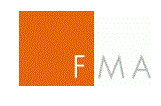By Paul O’Donoghue
SMALLER banks are spending up to five times as much, on a proportional basis, as larger firms, a new report has found.
A new study from U.S. database firm LexisNexis looking at UK lenders found that in 2023, for those with over £49 million of assets under management (AUM), companies typically 0.43% of their revenue on compliance per year.
However, for smaller financial institutions with less than £49 million, the typical spend was 2.3% of revenue.
“Whilst it’s true that the average annual financial crime compliance (FCC) cost burden continues to be significantly lower for smaller firms, nevertheless it remains significantly higher when measured as a cost-to-revenue ratio,” the report found.
“In fact, smaller firms’ FCC costs were calculated to be five times higher, as a proportion of revenue, than those of their larger counterparts in 2023.
“[Smaller lenders] shouldered the rising cost of doing business, without the economies of scale enjoyed by larger institutions.”
As part of the study, LexisNexis surveyed 254 UK banks and fintechs in partnership with Oxford Economics.
The report also found that the cost of compliance has been steadily rising on an annual basis.
UK financial institutions spent a combined total of £28.7 billion on FCC in 2021, rising to £34.2 billion in 2022 and then £38.3 billion by 2023.
“Almost all financial institutions reported a rise in the cost of compliance last year – only 2% reported a fall in costs,” the report said.
The study said the rise in compliance costs in 2023 was largely driven “by underlying cost pressures”.
“Investment in new technologies was reported as the most important driver of internal FCC costs, narrowly surpassing growth in volume of FCC activity and increased staffing costs,” it said.
“This has been the case for the past three years, with firm level FCC cost increases mainly driven by increases in the costs of external technology and software.
“Growth in technology costs in 2023 was consistent with the previous year of the 2022 survey.”
Other factors which were cited as driving higher spending included more rigorous customer checks and higher volumes of customers.








